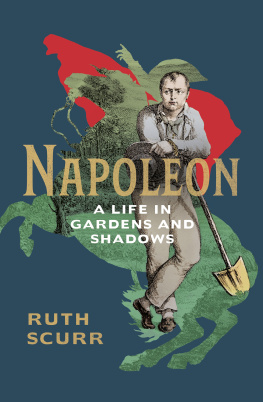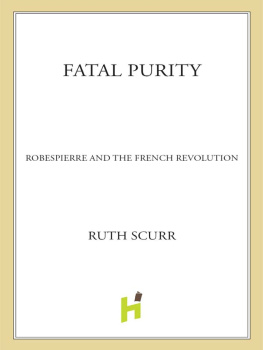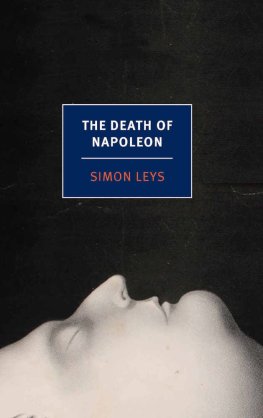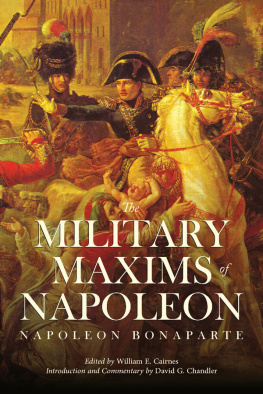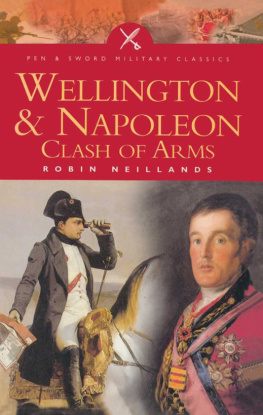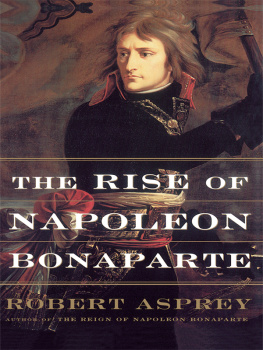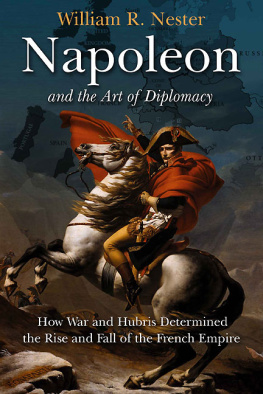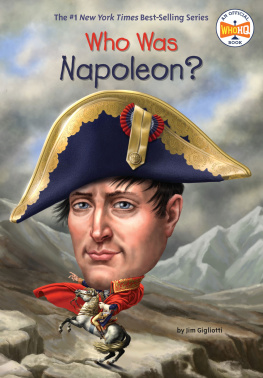Ruth Scurr - Napoleon: A Life Told in Gardens and Shadows
Here you can read online Ruth Scurr - Napoleon: A Life Told in Gardens and Shadows full text of the book (entire story) in english for free. Download pdf and epub, get meaning, cover and reviews about this ebook. year: 2021, publisher: Liveright, genre: Non-fiction. Description of the work, (preface) as well as reviews are available. Best literature library LitArk.com created for fans of good reading and offers a wide selection of genres:
Romance novel
Science fiction
Adventure
Detective
Science
History
Home and family
Prose
Art
Politics
Computer
Non-fiction
Religion
Business
Children
Humor
Choose a favorite category and find really read worthwhile books. Enjoy immersion in the world of imagination, feel the emotions of the characters or learn something new for yourself, make an fascinating discovery.
- Book:Napoleon: A Life Told in Gardens and Shadows
- Author:
- Publisher:Liveright
- Genre:
- Year:2021
- Rating:4 / 5
- Favourites:Add to favourites
- Your mark:
Napoleon: A Life Told in Gardens and Shadows: summary, description and annotation
We offer to read an annotation, description, summary or preface (depends on what the author of the book "Napoleon: A Life Told in Gardens and Shadows" wrote himself). If you haven't found the necessary information about the book — write in the comments, we will try to find it.
Marking the 200th anniversary of his death, Napoleon is an unprecedented portrait of the emperor told through his engagement with the natural world.
How should one envisage this subject? With a great pomp of words, or with simplicity? Charlotte Bront, The Death of NapoleonThe most celebrated general in history, Napoleon Bonaparte (17691821) has for centuries attracted eminent male writers. Since Thomas Carlyle first christened him our last Great Man, regiments of biographers have marched across the same territory, weighing campaigns and conflicts, military tactics and power politics. Yet in all this time, no definitive portrait of Napoleon has endured, and a mere handful of women have written his biographya fact that surely would have pleased him.
With Napoleon, Ruth Scurr, one of our most eloquent and original historians, emphatically rejects the shibboleth of the Great Man theory of history, instead following the dramatic trajectory of Napoleons life through gardens, parks, and forests. As Scurr reveals, gardening was the first and last love of Napoleon, offering him a retreat from the manifold frustrations of war and politics. Gardens were, at the same time, a mirror image to the battlefields on which he fought, discrete settings in which terrain and weather were as important as they were in combat, but for creative rather than destructive purposes.
Drawing on a wealth of contemporary and historical scholarship, and taking us from his early days at the military school in Brienne-le-Chteau through his canny seizure of power and eventual exile, Napoleon frames the generals story through the green spaces he cultivated. Amid Corsican olive groves, ornate menageries in Paris, and lone garden plots on the island of Saint Helena, Scurr introduces a diverse cast of scientists, architects, family members, and gardeners, all of whom stood in the shadows of Napoleons meteoric rise and fall. Building a cumulative panorama, she offers indelible portraits of Augustin Bon Joseph de Robespierre, the younger brother of Maximilien Robespierre, who used his position to advance Napoleons career; Marianne Peusol, the fourteen-year-old girl manipulated into a Christmas-Eve assassination attempt on Napoleon that resulted in her death; and Emmanuel, comte de Las Cases, the atlas maker to whom Napoleon dictated his memoirs. As Scurr contends, Napoleons dealings with these people offer unusual and unguarded opportunities to see how he grafted a new empire onto the remnants of the ancien rgime and the French Revolution.
Epic in scale and novelistic in its detail, Napoleon, with stunning illustrations, is a work of revelatory range and depth, revealing the contours of the generals personality and power as no conventional biography can.
Ruth Scurr: author's other books
Who wrote Napoleon: A Life Told in Gardens and Shadows? Find out the surname, the name of the author of the book and a list of all author's works by series.

